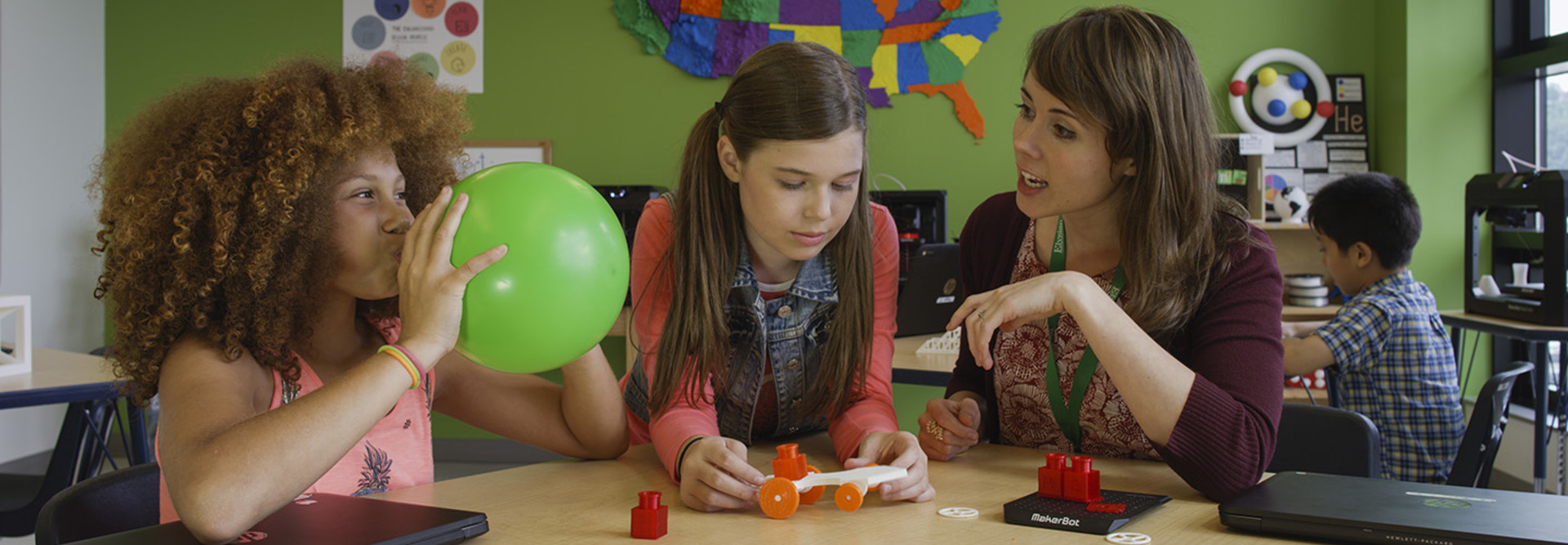New Educator Program from MakerBot Aims to Help Teachers Leverage 3D Printing
From creating prosthetics to exploring creativity and enhancing understanding of literature, 3D printing has a lot of potential in the K–12 classroom. But for a teacher who has never used a tech tool like a 3D printer, it can be a daunting task.
“For teachers who are inundated with tons of new technology and who have changing standards to adhere to, the intimidation factor of 3D printing is real,” says Drew Lentz, MakerBot’s education manager.
This possible intimidation was the impetus behind the MakerBot Educators program that was launched at the Future of Education Technology Conference earlier this year. Playing off Thingiverse Education —MakerBot’s collection of science, technology, engineering, art and mathematics (STEAM) lesson plans — Lentz says MakerBot Educators is a community of teachers of various skill level and backgrounds working together to further 3D printing in education.
“There was a huge need and request from most of our education customers for content and community,” says Lentz. “Essentially, they had a 3D printer, but didn’t necessarily know how they could use it in alignment to their standards.”
In order to become a MakerBot Educator, teachers need to register their 3D printer and post at least two lesson plans to Thingiverse Education, which now boasts around 300 lessons.
Since formally opening, Lentz says the program has seen over 100 applicants.
“I think hearing from a teacher who is implementing 3D printing and finding success is quite different from hearing from a manufacturer and even an administrator,” says Lentz.
Educators Prefer to Learn About Technology from Peers
Surveys and studies have regularly found that K–12 educators highly value the opinions and guidance of fellow educators. Education Week’s 2016 Technology Counts survey found that teachers put the most faith in other educators when it comes to recommendations about technology.
A recent study from the University of Central Florida indicated that math teachers who participated in “mentor-supported professional development increased the amount and level of technology use in their practice.”
These findings indicate it shouldn’t be a surprise that MakerBot has seen a steady stream of applications for its educator program.
“Being a part of the MakerBot Educator community allows me to be part of a network of teachers who see the same benefits of the technology and who I can learn from and share ideas with,” says teacher Brian Mernoff, who participated in an early trial, in an eSchool News article.
3D Printing in Classrooms Helps Prepare Students for the Future
Across all industries, 3D-printing spending is projected to reach $35.4 billion in 2020, an IDC report found.
Because of the clear potential in fields like engineering and architecture, Lentz says schools should use 3D printers as a way to get students future-ready.
“3D modeling is a staple skill in a lot of industries,” he says. “We’re really focusing on just exposing students to the design process.”
Thingiverse Education features lessons for students from kindergarten all the way to university level and includes things like historic recreations and bridge-making.
“By starting early in middle school and high school, we can now send students to college already possessing 3D design skills,” says MakerBot Educator Paul Gerton in the eSchool News story. “They are then better prepared for classes, co-ops and internships right from the start.”









